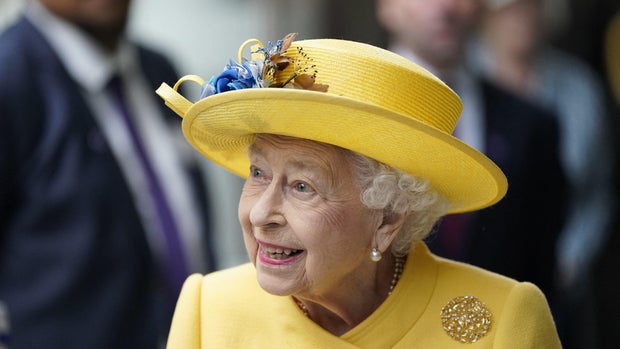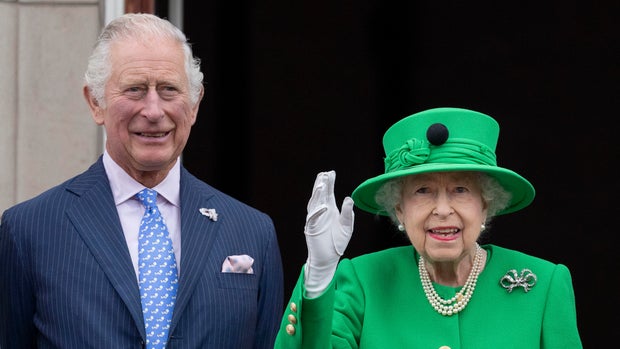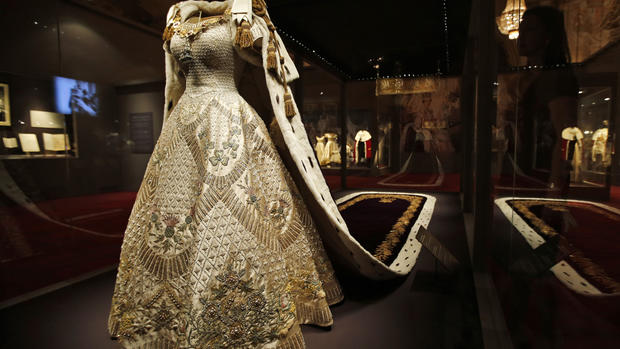[ad_1]
London — Queen Elizabeth II, of Great Britain longest reigning monarch and one of the most enduring royal personalities the world has known, has died at the age of 96. Buckingham Palace confirmed the Queen died on Thursday at Balmoral Castle, her official residence in Scotland.
“The Queen passed away peacefully at Balmoral this afternoon. The King and Queen Consort will remain at Balmoral this evening and return to London tomorrow,” the palace said in a statement, referring to the new monarch, Elizabeth’s eldest son, now known as King Charles III, and his wife Camilla.
“The death of my beloved mother, Her Majesty The Queen, is a moment of greatest sadness for me and all members of my family,” Charles said in a statement on Thursday. “We deeply mourn the passing of a beloved sovereign and a much-loved mother. I know her loss will be deeply felt throughout the country, the realms and the Commonwealth and by countless people around the world. During this period of grief and change, my family and I will be comforted and supported by our knowledge of the respect and deep affection in which the Queen was so widely held.”
The news of his death came after palace officials issued a statement earlier in the day she said Elizabeth had been placed under “medical supervision” at Balmoral as her doctors were “concerned about Her Majesty’s health.” All the leading members of the royal family quickly left to be by her side.
The Queen and the British people, together with the Commonwealth nations, had celebrated a historic milestone: 2022 marked the monarch’s Platinum anniversary, 70 years on the throne. But the Queen only made a few short appearances on events in her honor to mark the anniversary in June citing mobility issues and discomfort.
Health problems encouraged her to cancel a number of other plans in recent months. But until the end of the summer the queen remained an active presence in public life, returns to regular engagements just weeks after her husband’s death Prince Philip in the spring of 2021.
She came to the throne through an accident of history – and her family’s romantic stories would sometimes make her reign seem like a soap opera – but Elizabeth Alexandra Mary Windsor, Queen Elizabeth II, may have single-handedly reinvented and saved the British monarchy.
Elizabeth was not born to be queen. She only became heir to the throne when she was 10 years old, in 1936, because her uncle Edward VIII abdicated to marry the American divorcee Wallis Simpson, and Elizabeth’s father, George VI, took his place.
As the first of the then new generation of royals, Elizabeth quickly became a public favourite.
During World War II, the young Princess Elizabeth not only worked to raise the nation’s morale, appealing to her fellow Britons on public radio to “make tomorrow’s world a better and happier place,” she also served as a volunteer in the war effort — training as a mechanic in women’s aid; volunteer no. 230873.
After the war, her marriage to Philip Mountbatten, an Anglicized member of the Greek royal family, did more than give a war-weary country something to celebrate. The children that the marriage produced – first Charles and then Anne, Andrew and Edward – re-established royal line. Her marriage to Philip lasted 73 years, until his death on April 9, 2021 at the age of 99.
Elizabeth came to the throne in February 1952 after the death of her father, George VI. Her coronation in June of the following year, it was the first ever to be televised. With all its tradition and glitter, it also seemed to reinforce the impression that everything was as it should be. Duty was the ethos of the royal family during Elizabeth’s reign.
“I declare to you all that my whole life, whether long or short, shall be devoted to your service,” she once told the nation.
But behind the scenes, the family she chaired had its problems. One after another, royal marriages broke down around her: her sister Margaret’s, her daughter Anne’s and her son Andrew’s all ended in awkward divorces, but none more spectacularly than Prince Charles’s marriage to Diana Spencer.
The long, very public unraveling of the heir to the throne’s marriage shook the foundations of the entire royal enterprise.
Royal life seemed to go up in flames, as symbolized by a fire that badly damaged Windsor Castle.
“Nineteen-92 is not a year that I shall look back on with undiluted joy,” the Queen concluded. “In the words of one of my more sympathetic correspondents, it has turned out to be onea terrible year‘.”
But Elizabeth managed to ride out the “terrible year”.
After the Windsor fire and public complaints about repair costs, she agreed to pay taxes on her income.
The Queen showed that she could change with the times – but only as much as she had to.
Amid the national outpouring of grief after the sudden Princess Diana’s death in a car accident in 1997, she acknowledged the princess’s stature with a subtle but significant bow for her coffin.
Years later, when Prince Charles married Camilla Parker Bowles, despite any misgivings the Queen might have had, she graciously hosted the reception. She recently said that when Charles eventually ascends to the throne, she would like Camilla to be honored with the title Queen Consort.
Under Elizabeth’s watchful eye, the next generation of royals, Prince William and his wife Kate, and Prince Harry and his wife Meghan took their places in the spotlight, bringing a modern touch to ancient traditions.
When Harry and Meghan decided to step away from royal life and talked about its ugly side in a interview with Oprah Winfreyoffered the Queen public assurances that they would always be “much loved family members.”
During her seven decades on the throne, Elizabeth redefined the monarchy, transforming it into a less reverent and more accessible age.
Now it will fall to her eldest son and heir, Prince Charles, and after him, Prince William, to carry on this legacy in the challenging times ahead.
[ad_2]




Leave a Reply